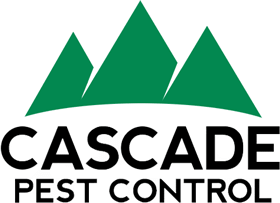Author: Kurt Treftz, Cascade Pest Control
Getting Rid of Garden Ants
The “garden ant” is a colloquial name that simply refers to any ant that is commonly found outside in your yard. Problems occur when these outside ants venture indoors, as they can contaminate stored food and eating surfaces.
Improve Ant Control Methods by Understanding Nesting Habits
Many common ant varieties only nest outdoors, but there are some household varieties that will nest either indoors or outdoors. Moisture ants and carpenter ants, for example, are attracted to damp areas and wood particles, respectively, and therefore could find areas to burrow / swarm in nature or in your home.
Another tricky trait about house and garden ants is that they sometimes have more than one nest. They are also capable of travelling great distances to get from nest to nest; this can lead to them scavenging inside of your home, and retreating back outside to the nest. In this respect, they can be difficult to fully eradicate, especially if you aren’t professionally trained.
Carpenter ants are probably the most dangerous ant variety in the Pacific Northwest because of their tunneling tendencies and prevalence in the area. In addition to them, household ants attracted to food or structures are also pesky and can cause costly amounts of damage if not abated.
This video shows one of our Cascade Pest Control technicians examining several types of ant nests and scenarios that are helpful in advising ways to protect your home against ant invasions.
The fist clip shows a mass of ants around a nest that’s underneath some landscape timbers. The frantic activity and large number of ants hints both to the colony size as well as how, when disturbed, they can make quite a mess. This particular scenario shows them preparing to send out winged reproductives beyond this nest.
The second section shows ants disturbed from someone watering the garden. Garden ants have a sense of the humidity and air pressure, so having a sudden, unexpected change to their environment, like an onslaught of water from a hose or watering can, alarms them. It is important to notice if you have a larger than normal disturbance after a regular activity like this, as it may signal that some ant control treatments are necessary. This clip also shows the previous reproductives preparing to fly off, mate, and subsequently start new colonies.
The third segment again shows garden ants nesting in a garden hose reel. It is important to note that this is not a main nest, but simply a nursing nest for egg incubation. Due to the amount of sun exposure this structure gets, it is warmer and more ideal for eggs and larvae than the main nest—which could be located in a log or other structure nearby. As shown by the heightened activity when the reel is moved, ants are very protective of these nests and larvae. Cascade technicians are trained to seek out these nests as well as main ones in order to prevent them from entering your home.
How to Control Ants Outside with Cascade Pest Control
Luckily, Cascade Pest Control is here to help with the best ways to get rid of garden ants and keep them from entering your home. For forty years our eco-friendly and effective ant control methods have been keeping your family and property clean and safe.
Trust Cascade Pest Control with your ant control and prevention for both residential and commercial properties. Our professionally trained technicians know what to look for and where to search in order to keep your structures free from ant pests.
Call 888-989-8979 or request a quote to get started today!
